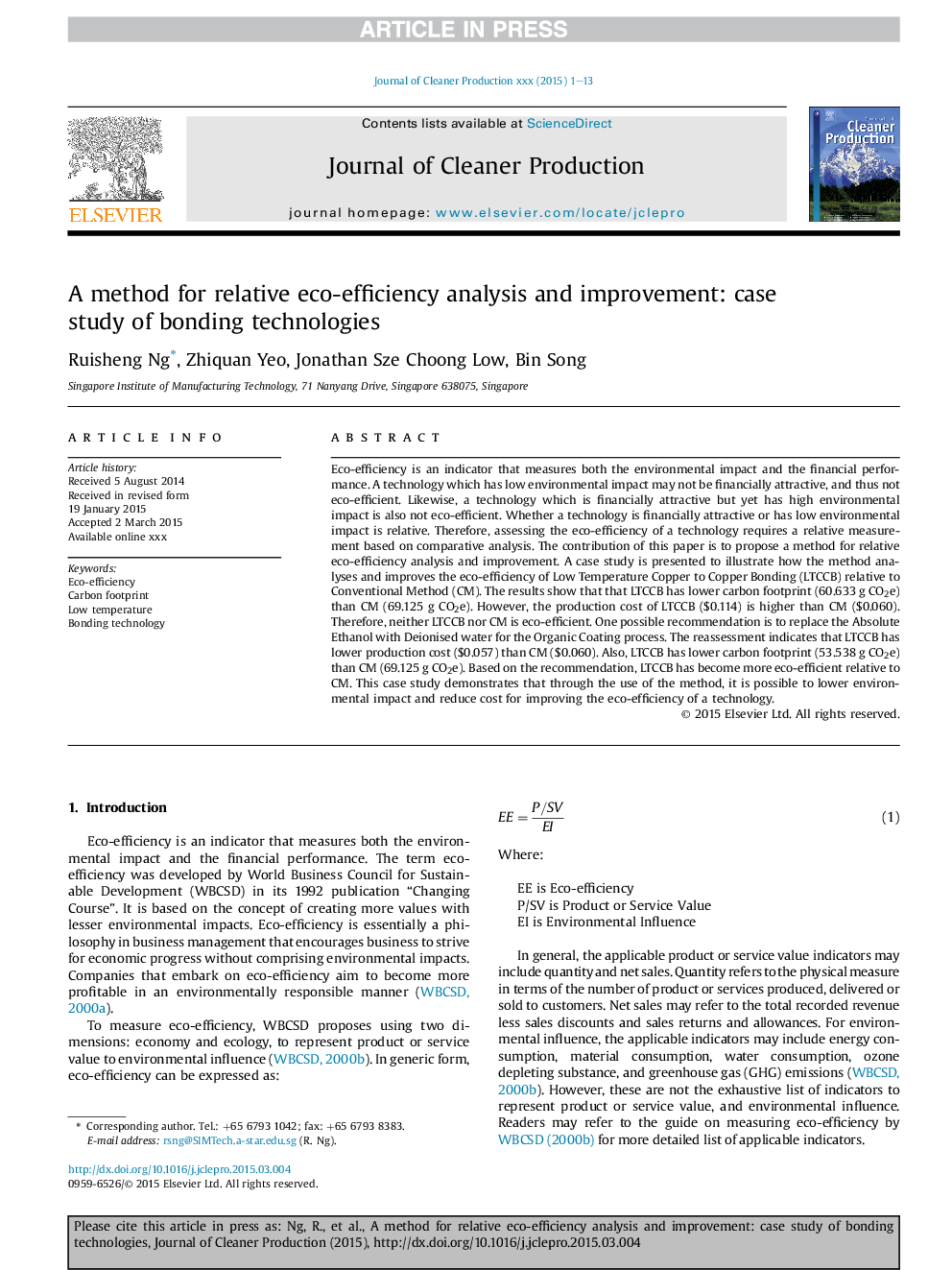| Article ID | Journal | Published Year | Pages | File Type |
|---|---|---|---|---|
| 8104168 | Journal of Cleaner Production | 2015 | 13 Pages |
Abstract
Eco-efficiency is an indicator that measures both the environmental impact and the financial performance. A technology which has low environmental impact may not be financially attractive, and thus not eco-efficient. Likewise, a technology which is financially attractive but yet has high environmental impact is also not eco-efficient. Whether a technology is financially attractive or has low environmental impact is relative. Therefore, assessing the eco-efficiency of a technology requires a relative measurement based on comparative analysis. The contribution of this paper is to propose a method for relative eco-efficiency analysis and improvement. A case study is presented to illustrate how the method analyses and improves the eco-efficiency of Low Temperature Copper to Copper Bonding (LTCCB) relative to Conventional Method (CM). The results show that that LTCCB has lower carbon footprint (60.633Â g CO2e) than CM (69.125Â g CO2e). However, the production cost of LTCCB ($0.114) is higher than CM ($0.060). Therefore, neither LTCCB nor CM is eco-efficient. One possible recommendation is to replace the Absolute Ethanol with Deionised water for the Organic Coating process. The reassessment indicates that LTCCB has lower production cost ($0.057) than CM ($0.060). Also, LTCCB has lower carbon footprint (53.538Â g CO2e) than CM (69.125Â g CO2e). Based on the recommendation, LTCCB has become more eco-efficient relative to CM. This case study demonstrates that through the use of the method, it is possible to lower environmental impact and reduce cost for improving the eco-efficiency of a technology.
Related Topics
Physical Sciences and Engineering
Energy
Renewable Energy, Sustainability and the Environment
Authors
Ruisheng Ng, Zhiquan Yeo, Jonathan Sze Choong Low, Bin Song,
